Enrollment System Complete Capstone Documentation
Table of Contents
- Enrollment System Complete Capstone Documentation
- Project Context
- Purpose and Description
- Objective of the Study
- Scope and Limitations of the Study
- CHAPTER II
- Synthesis
- TECHNICAL BACKGROUND
- CHAPTER III
- Requirements Analysis and Documentation
- System Functionality
- Software Requirements
- Hardware Requirements
- Peopleware Recommendation
CHAPTER I
INTRODUCTION
The advent of computer technology has opened a new chapter in technological advances which makes computers become part of everyday life. Computers make all lives easier so that all can live good lives. Computers are everywhere at work, at school, and at home. The educational system has taken advantage of the technology in teaching and learning, processing data, record keeping, and in their enrollment system.
Enrollment systems are used in recording a student’s information. A well built one will reduce the load on the people that normally have to-do all the work. Enrollment system is useful especially when the school retrieves the important information from the student. In the enrollment system, the school can trace what are the standings of the students. The manual enrollment system in a school can lead to inaccurate evaluation of student performance, loss of student records, inaccurate reports, and slow enrollment processing. Students will be confused on what they should do and how they will do to be able to enroll. It is extremely useful in the school in a way of making the processes of enrolling much easy.
The School is using the traditional way in their enrollment process. There are Three Thousand students enrolled in four (4) year levels. The population of the school increases every year such that the manual system of enrolment and student record keeping are consuming too much time to the teachers or enrolling officer.
In this study, the researchers aim to develop a fast, accurate and reliable computer-based enrollment system for the administration, faculty and staff of School that will speed up the enrollment process, facilitate and secure students’ record, minimize the effort exerted by the enrolling officer in updating students information, provide reliable record keeping facility, and provide accurate enrollment summary report.
The proposed system includes important features such as login/logout services, administration’s module, registrar’s module, cashier’s module, database maintenance, and help assistant.
Project Context
The present system of the school is done manually such as the enrollment system, and record keeping. From the start of the school’s operation, they use the manual system.
During the enrollment period, students will go to the admission office and for requirements needed for the enrollment. The evaluator will then evaluate student’s grades in order to know what subjects are to be taken in the current school year and to know their status. A list of subjects that the students are required to take will be prepared by the evaluator. After getting the list, students will pay to the cashier for their PTA fee and other fees. The cashier will issue receipts to the students in order to clarify that the students had already paid. At the end of the enrollment period a summary of student’s enrollment will be prepared by the person in charge.
The manual updating of the student’s records slows down the admission process because the enrolling officer takes time to search and locate the records of the student in the filing cabinet. Delays in the evaluation of students because the enrolling officer takes time to check student’s previous grades and some of the student’s records are misplaced. Tallying of subjects also takes time because of non-organized student’s files.
For these reasons, the researchers were challenged and have decided to design and develop a computerized enrollment system that is fast, accurate, reliable, and easy to use. The proposed enrollment system is a good step for the school. This could be a great help to the people who are handling many tasks during the enrollment period by providing fast and easier access to information.
Purpose and Description
The main purpose of this capstone project is to develop a computer-based enrollment system that is fast, accurate, reliable, and easy to use. The proposed capstone project entitled “Computerized Enrollment System” will be designed and developed by the researchers for the administrators, faculty, staff, and students of School.
The proposed project will replace the manual process of the school’s existing manual enrollment system and will use computer based software that enables authorized users to speed up the enrollment process, provide an updated, secured and easy to access student records, and generate accurate reports.
The features of the system will focus on: login/logout services, administrator’s module, registrar’s module, enrolment/cashier module, database maintenance, and help assistant.
Log-in/Log-out Services, refers to one of the features of the proposed system that will require authorized users to enter their user ID and password to be able to access their user account in the administrator’s module, registrar’s module, and enrolment/cashier module.
Administrator’s Module, allows the school administrator to manage sections, year level, school year (set active school year – used in current enrollment), subjects, faculty and staff.
Registrar’s Module, allows the registrar office staff to manage students credentials, view list of enrolled students, view student records and input grades.
Enrolment/Cashier Module, allows the cashier to view enrollment statistics, enrolled student complete details, record payments, manage fees and student ledger.
Database Maintenance, refers to one of the features of the system wherein the administrator can update students’ records, manage data and transaction log files, and backup the system.
Help Assistant, which contains instructions on how to use the system.
The proposed project can generate the following outputs, these are: user’s log report, list of enrolled students, enrollment summary reports, payments and collectibles, and student ledger.
The proposed project offers several benefits for the school administration, office staff and the student which include the following: admission officer can easily update student record, evaluate students, provides list of student subjects, record payments, provides list of collectibles, and manage credentials such as Form 137.
This project will provide an enrolment database for the school. It will store student’s record such as student’s name, year, section, schedule, and school fees.
It may also be use by the finance department of the school for their school fees. The database is designed for use by staff and other authorized user in the registrar office to enable them to easily produce information required by the different people in the school. The database system will make the enrolment and collection of fees for the school easy and fast.
Objective of the Study
The main objective of the study is to develop a computerized enrollment system for School that would provide fast, accurate, and easy to use enrollment and record keeping system.
The specific objectives of the researchers in conducting this study are the following:
- To minimize the effort of the teacher-in-charge or the enrolling officer in updating student’s record.
- To speed up the enrollment process in all year levels.
- To provide a database for student’s files so that the enrolling officers would easily search, locate, and update records.
Scope and Limitations of the Study
This capstone project will be limited only on the computerized enrollment system and record keeping of the school. The researchers will focused in gathering relevant data such as data of students, computation of necessary fees, handling of student grades, preparing reports, and generate student’s credentials.
The database maintenance feature of the proposed system will focus on adding, and editing students’ records, students’ grades, maintaining and managing table entries of users and user’s log; and monitoring of the changes done by authorized users in the system.
The proposed project will be implemented using client-server architecture and will employ the Local Area Network (LAN) connectivity. This is not accessible through the World Wide Web and only the administrator who has access to the Administrator’s Module has the full access of the different features of the system.
CHAPTER II
REVIEW OF RELATED LITERATURE/SYSTEM
This chapter presents the review of the related literature and studies and the technical background of which will discuss the technicality of the project, details of the technologies to be used and the relevance of the project.
REVIEW OF RELATED LITERATURE/SYSTEMS
Computerized Enrollment System
According to Studymode.com (2012) computerized enrollment system tends to replace what we called “Paper Less” transaction and also it will make any transaction easier and faster. Also it tends to lessen manpower and human efforts in terms of processing any transaction in regards with enrollment transaction.
(http://www.studymode.com/essays/Computerized-Enrollment-Thesis-927388.html)
Record Keeping
According to Chifwepa (2009) records have a dual function. Not only do they enable a school to have a clear picture of what is available and what is required, but they also provide justification of certain needs. Furthermore, they serve to extend the memory by which persons and/or organizations can pass their cultures and achievements on to future generations. Record keeping is vital to an education system’s information cycle as a whole, because of its fundamental role in the process of efficient information production and collection. Since some of the most crucial information is produced at the school level, the importance of creating a systematic record-keeping culture at that level cannot be stressed enough. (http://www.adeanet..org/adeaPortal)
Importance of Record Keeping
In the study conducted by Adebowale and Osuji (2008) it investigated the record keeping practices of primary school teachers in selected local government areas in Ondo state of Nigeria. Data were collected with a questionnaire titled “Questionnaire on Record Keeping Practices of Primary School Teachers” and data were analyzed using descriptive statistics. The findings showed that although the teachers were familiar with some principles of record keeping they were not proficient in most of the operational procedures and did not demonstrate the knowledge of using record keeping to further the development of teaching and learning activities. Equipments that could be used for safe keeping of records were not available. Recognizing the importance of record keeping towards the successful implementation of the country’s Universal Basic Education programme, the researchers recommend that teachers should be given regular in-service training in record keeping and retrieval. Development of record keeping skills should also be included in teacher preparation programmes. (https://www4.nau.edu/cee/jep/journals.aspx?id=183)
Student Information System
According to Schoolcomputing.wikia.com (2012) Student Information Systems (SIS) manages student records and information. A SIS may handle course management, scheduling, personnel records, grades/comments, room/resource management and more. They can be used to run complex enrollment reports, admissions, course schedules, grades and more. A SIS helps schools manage various operations including student data, administrative, and fundraising operations. A SIS allows for the quick and accessible flow of information. By implementing a SIS to manage daily school needs, teachers and administrators can save time and have immediate access to a variety of student data. These systems are needed for all parties involved in education – parents, children, teachers, administrators, alumni, etc. (http://schoolcomputing.wikia.com/wiki/Student_Information_Systems)
Synthesis
The abovementioned concepts on the computerization of enrollment system and record keeping is relevant to the present project because these serve as foundation in the development of an enrollment system for the School that will minimize the time consumed and effort exerted by the staff in updating student records and record keeping. The concepts also point to the features of the present study such as the users’ module and database maintenance that will be integrated by the developers in the proposed system.
The concept on record keeping, importance of record keeping, and its fundamental role in the process of efficient information production and collection is used as basis by the researchers in the formulation of the general objectives and important factors to be considered in designing the features that should be included in the development of the proposed enrollment system.
The related studies on the managing of records and information, and record keeping practices provide details and evidence that guide the researchers on how to design and develop an effective enrollment and record keeping tool.
TECHNICAL BACKGROUND
The existing enrollment system of the School is manually done. The school does not have an existing technology that is essential and necessary for fast and easy enrollment and record keeping process and generation of reports.
For implementation of the proposed system, the school needs to acquire computer units, machine for printing results, and set-up Local Area Network connectivity.
Using the computerized enrolment system and taking advantage of the technology in processing data, record keeping, and in their enrollment system will provide an effective means of processing information and record keeping for the school.
The proposed system shall be installed on a main server and may have a back-up server in case the main server malfunctions. The Microsoft Server 2003 Enterprise Edition will be used as operating system for the server for running applications such as networking and databases. A software firewall shall be configured in the main server and other computers to protect it from viruses.
In the development of the new software, the researchers will utilize the Modified Waterfall Model.
CHAPTER III
METHODOLOGY
This chapter deals with the method and technique used by the researchers in conducting the study, the system development method, and its results and discussion.
The researchers will utilize different data gathering techniques in the conduct of this capstone project and will employ different analytical tools to help and justify the conduct of the study. The data gathering techniques will allow researchers to identify the problems encountered by the administration and staff of the school in the existing system. The analytical tools include interview, observation and brainstorming. The data gathered will be analyzed and used as bases in the system design and development of the system.
An interview is a conversation between two people (the interviewer and the interviewee) where questions are asked by the interviewer to obtain information from the interviewee. Observation is either an activity of a living being, such as a human, consisting of receiving knowledge of the outside world through the senses, or the recording of data using scientific instruments. The term may also refer to any data collected during this activity. An observation can also be the way you look at things or when you look at something. Brainstorming is used to get as many ideas as possible from a group of people. Generally used to identify possible solutions to problems, and clarify details of opportunities and finding the solutions to the problem of the existing system.
On system development, the researchers will utilize the Systems Development Life Cycle (SDLC) method in the development of the system. The SDLC method is the process employed in the analysis and design of the system as shown in Figure 1.
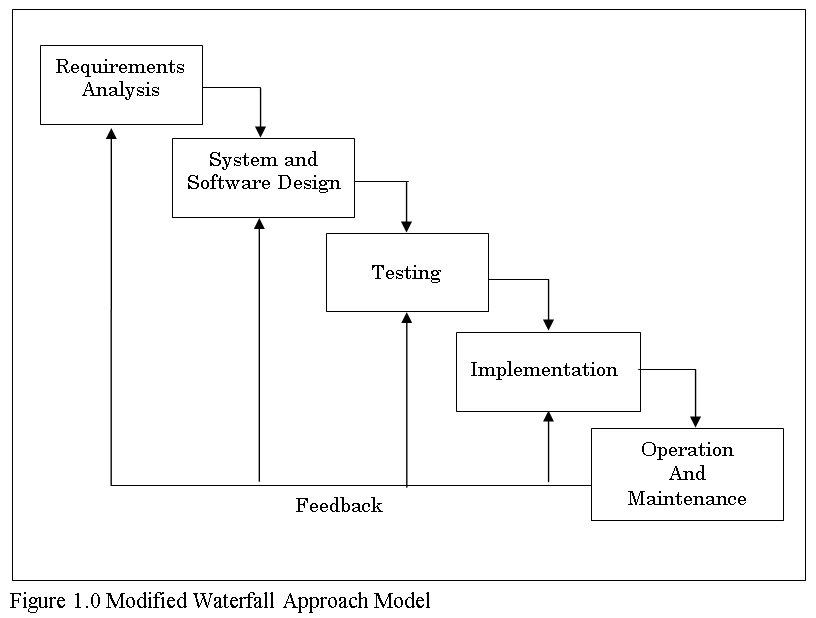
Figure 1.0 Modified Waterfall Approach Model
Figure 1 illustrates the Modified Waterfall Model that will be used by the researchers in developing the Computerized Enrollment System which is made up of several phases. These are the following:
Requirement Analysis. In this phase, the researchers will study how the system works, determine the user’s wants, needs and requirements, and recommend a solution. The researchers will interview the school administrator, registrar and finance department staff to find out system requirements. After the interview, the researchers will analyze the data, research on related literature and studies. It also involves developing estimates for the work to be performed, establishing the necessary commitments, and defining the plan to perform the work, and finalized the project plan.
System and Software Design. On this phase, the system will be designed based on the requirements needed in the system. The researchers will design the database model structure, link the database tables, design the data forms, and prepare the presentation of the project. The evaluation of the design and functionalities of the system will be conducted. The programmer will review and revise the design of the tables and forms of the system, and test the functionalities of the system. Data Flow Diagram (DFD) will be used to represent the flow of data in the system. Entity Relationship Diagram (ERD) shall be employed as data model for the system. The programmer will create the source codes necessary for the system to be constructed.
Testing. This phase includes the process of evaluating a system or application, in order to check whether the application meets all requirements of the client and to detect the errors. Requirements such as software functions and features where checked to determine if it will work according to the specification. This stage ensures that the produced system is complete and performs efficiently, evaluate whether the software perform all activities after integration with the existing operating environment, and measure up the reliability and overall quality of the software.
Implementation. In this phase, the researchers will conduct the system dry-run and conduct training of the target users of the system. The users of the system will check if the recommended functions and suggestions of the users are met.
Operation and Maintenance. This Phase is to ensure the information system is fully functional and performs optimally until the system reaches its end of life. The Operations and Maintenance Phase comprises the following: management of changes to the system to support end users, monitoring of system performance, and performance of required security activities such as backups, and continuation of end user support.
Also, this phase will provide users with the documentation and training required to use the system effectively. Data Conversion will only occur once, but user documentation will be required. Deployment of the product will be carried out, on the hardware that is going to be used in production (on live systems). Deployment itself requires careful planning. Once the product is deployed, initial data will be populated, user training will happen.
Requirements Analysis and Documentation
The proposed system is entitled “Computerized Enrollment”, a computer software that enables authorized users to automate the enrollment system and record keeping of the school. The software will enable users to locate and retrieve relevant student information and credentials, and generate enrollment summary report.
The completion of the design and development of software will depend upon meeting the following goals and objectives:
- To minimize the effort of the teacher-in-charge or the enrolling officer in updating student’s record.
- To speed up the enrollment process in all year levels.
- To provide a database for student’s files so that the enrolling officers would easily update records.
- To provide enrollment and record keeping software that is fully accessible through Local Area Network (LAN) of the school.
- To generate reports that is fast, reliable and accurate.
System Functionality
Administrator – The log-in and log-out services, one of the features of the system, will prompt authorized users to enter user id and password. The administrator is the only authorized user of the system who can access all the features of the proposed system software. It has a database that can be updated and maintained by the administrator.
Registrar – The registrar’s office staff are prompt by the system to enter their user id and password. The staff may input grades of students and validate them.
Cashier – The cashier is prompt by the system to enter their user id and password. Upon successful login in the system, the cashier may view the enrollment statistics and students’ complete details. The cashier may receive payments and print receipt.
Project Plan
Before the software project is implemented, the researchers will prepare a project schedule that identifies the anticipated activities involved, management of resources and project plans showing the cost needed in the development of the computer-based enrollment system.
Design of Software and Process
After the gathering of data and identifying user needs through observation and interview as well as users suggestions the researchers will create a design for the system to be developed.
All the requirements of the first phase are being used to contribute in the successful preparation of creating the Computerized Enrollment System for administration and staff. This section will present the Context Diagram, Decomposition Diagram, DFD Explosion for administrator, registrar, and cashier, and Entity Relationship Diagram of the developed system.
Development and Testing
The Modified Waterfall Model, a model develops systematically from one phase to other in a downward fashion like a waterfall, is the system process model that the researchers will utilize in developing the system.
Testing will exercise the system in all possible ways. It includes initial testing and final testing of the new software. The new software together with the equipment and software should be tested prior to the delivery to help ensure that the system works as expected.
Requirements Definition Phase
Activities in this phase are the following: define system requirements, develop system process model, and develop application logical data model, estimate system workload, and identify strategies for training end users. During the Requirements Definition Phase, the researchers together with the beneficiary of the proposed system will work together to establish the architectural boundaries for the project, to establish criteria for measuring the technical performance of the system, and to baseline the requirements.
Software Requirements. The software development tools for this study are presented in Table 1.0.
Software Requirements
Development Tools
Visual Basic
The developers used this software in order to develop the design and screen forms as well as to build the database and server for the Computerized Enrolment System.
Microsoft Access – For database Access manipulation, storage of records.
Hardware Requirements. The researchers presents the minimum hardware resources necessary for the CES and is presented in Table 2.0
Hardware Requirements
Peopleware Recommendation. The recommendation of appropriate users for the proposed computerized enrollment system with specific task is given in Table 3.0.
Minimum Hardware Requirements
- Intel Dual Core or Higher Processor
- 512 MB to 1 GB Memory (Recommended)
- 80 GB, Hard Disk
- Dual LAN Card
- Standard Keyboard
- Standard Mouse
- AVR/UPS
- Switch
- Monitor
- Printer
Peopleware Recommendation
Software Developers:
Project Manager – Supervises and monitors the entire project activities and its development
System Analyst – Responsible for researching, planning and recommending software and system choices to meet an organization’s business requirements.
Programmer – Creates the source codes for the development of proposed system. Must be expert with the programming language to be used in the development of the system.
Researchers – Further researchers on the content and other studies related to current system being developed.
Recommended Users:
Back-end user:
Administrator – In charge of maintaining and managing the table entries of files; keeps the server up, running, and secure; keeps track of the log; updates the database, provides access to authorized users of the system.
Front-end users:
Cashier – One who have access to the payment and student ledger module and can receive payments and issue receipts.
Registrar – One who has access to the registrar module and can input and validates grades of students and generates report and student’s credentials.
The enrollment system may be utilized by beginners and professional users. The design and features suit the needs of the target users (administrator, registrar, and cashier) to provide a fast, accurate and effective enrollment and record keeping machine that provides the users of the system an accurate and reliable reports.
System Process Model. The researchers present the context diagram and the decomposition diagrams of the proposed computerized enrollment system which show the procedures of each function, the users and the expected outputs.
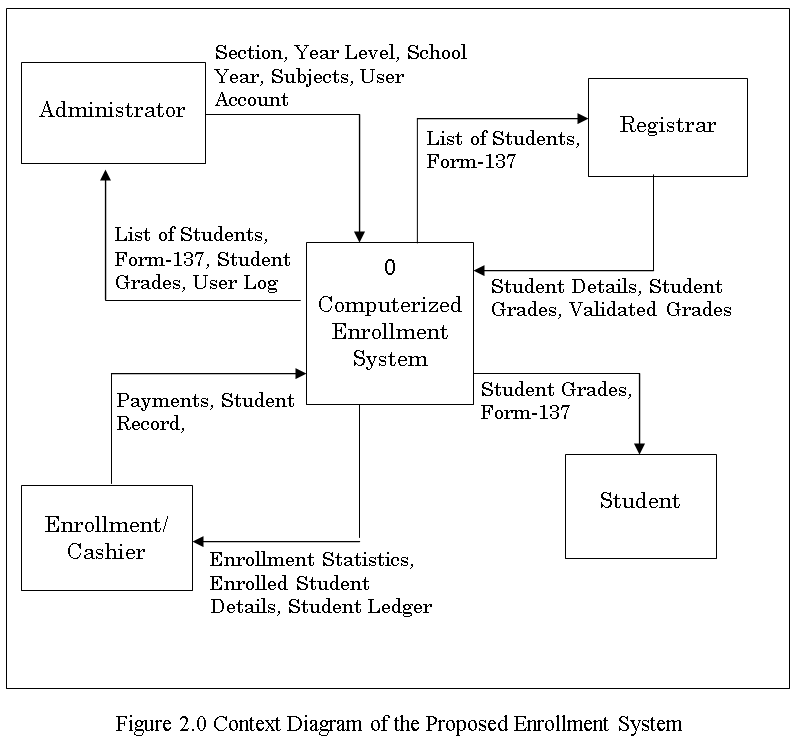
Figure 2.0 Context Diagram of the Proposed Enrollment System
The context diagram in Figure 2.0 shown above illustrates the authorized users input to the system and the expected output information to the users. The target users are the following: administrator, registrar, and cashier. The expected outputs of the proposed system are the following: List of enrolled students, enrolled student complete details, student grades and credentials, user log report, enrollment statistics, and student ledger.
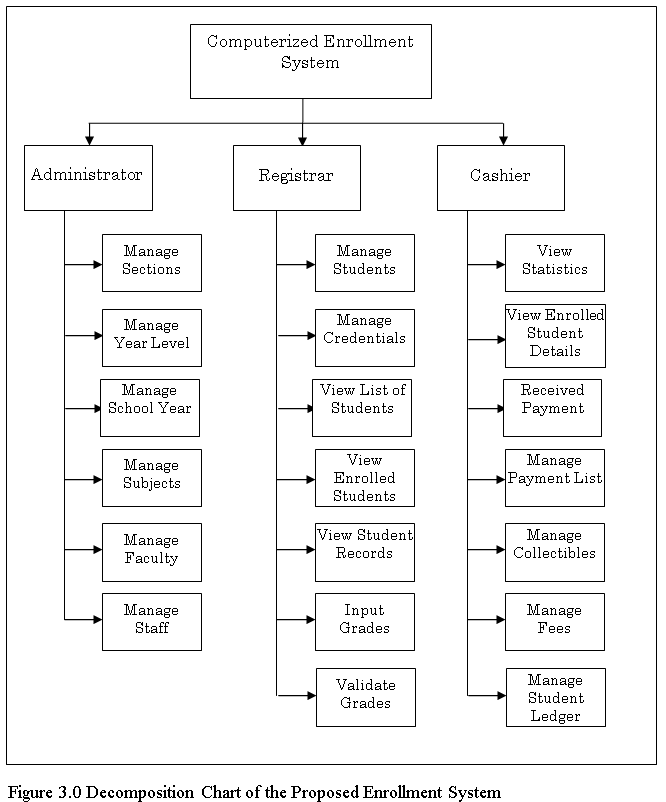
Figure 3.0 Decomposition Chart of the Proposed Enrollment System
The system has three modules, administrator’s, registrar’s and cashier’s module. The Administrator, will be provided a module to manage sections, year level, school year (set active school year – used in current enrollment), manage subjects, manage authorized users, and have full access to the system; Registrar, manage students (view list), manage credentials (form 137 etc), view all enrolled student, view student record (personal record, grades, subjects and teachers), grade input and validation; Enrollment/ Cashier, view enrollment statistics – enrollment, view enrolled student complete details (view subject, year-section and teacher)- enrollment, received payments, collectibles, payment list, manage fees and student ledger.
Database Model. The researchers present the database model by utilizing the Entity-Relationship Diagram (ERD) to establish the entity relationships of the related tables of the database for the maintenance of students’ record, enrollment details, grades, student credentials, and student ledger.
The administrator will manage the enrollment details which includes the following: section school year, subjects, faculty and staff and have full access to the system features. The Registrar staff will manage credentials, student record and grades. The cashier will view enrollment statistics, .receive payments, list collectibles, manage fees and student ledger,
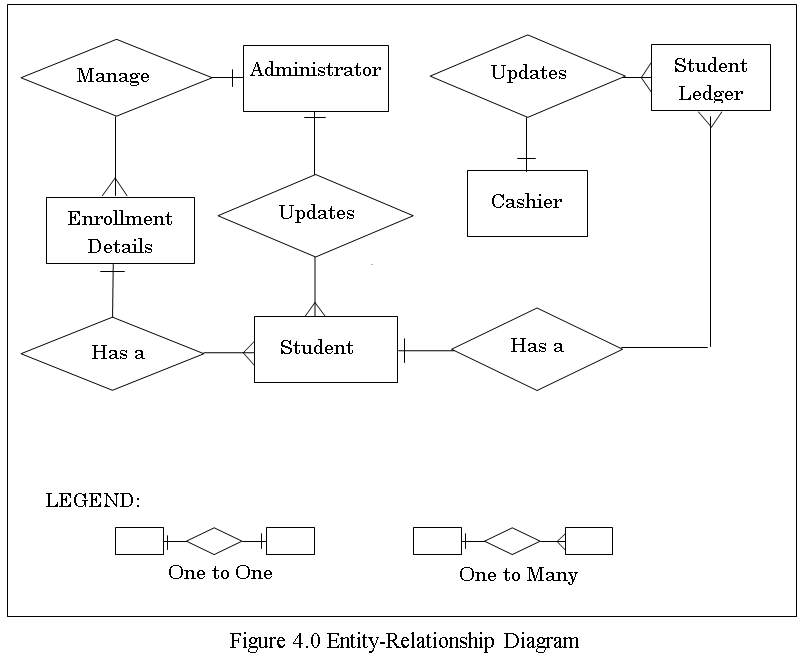
Figure 4.0 Entity-Relationship Diagram
Implementation and Unit Testing Phase
The system or system modifications will be installed and made operational in a production environment. The phase is initiated after the system has been tested and accepted by the user. After testing the software, the researchers plan to integrate the Computerized Enrollment System to its respondents. The researchers will conduct a system dry-run and conduct training to the target users of the system. The target users will check and evaluate the system if the recommended functions and suggestions of the users were met. This phase continues until the system is operational accordance with the defined user requirements.
Integration and System Testing Phase
The various components of the system are integrated and systematically tested. The user tests the system to ensure that the functional requirements, as defined in the functional requirements document, are satisfied by the developed or modified system. The developed software will be tested to examine its functionality.
In the Initial Testing the software will be pre-installed. The new software will be evaluated by IT experts. The researchers will make a letter and will personally release the evaluation form to the IT experts using the McCall’s Software Quality Model Evaluation Form. The tabulation of the Software Evaluation Results follows after the system is evaluated.
Final Testing of the developed software will be conducted after the initial testing. In this phase, the researchers will make a letter to the intended users, by using the standard User Acceptance Evaluation Form by Scates et. al to evaluate the Computerized Enrolment System where in the target users are the one who will test and rate the developed system.
Operation and Maintenance Phase
After deployment, the system may include changes and enhancements before its decommissioning. The system performance is closely monitored to ensure that it is accordance with user requirements, and needed system modifications are also incorporated. The operational system is periodically assessed to determine how the system can be made more efficient and effective. Operations continue as long as the system can be effectively adapted to respond to an organization’s needs. When modifications or changes are identified as necessary, the system may reenter the planning phase. System operation includes user support to the end user or users which is an integral part of the election process operations. Users should receive training on how to use the system.
In the software life cycle, the maintenance phase is the last stage of the cycle. After the system passes the design stage and is implemented, the maintenance phase begins. The maintenance-phase consists of maintenance-tasks to keep the system up and running. Understanding the characteristics of the maintenance phase of the software allows individual tasks with analyzing the performance of the software after deployment to correctly resolve issues that arise. Maintenance is always necessary to keep system usable and useful.
System Prototype
This portion presents the needed report layouts and screen forms of the developed system.
Report Layouts. The researchers will provide hard copy documents for the new system such as user log report, list of enrolled students, student grades, form-137, enrollment statistics, and enrolled student complete details.
Screen Forms. The researchers will present the screenshot layouts of system to give readers an idea on what the system looks like.
Implementation Plan and Result
The system or system modifications are installed and made operational in a production environment. The phase is initiated after the system has been tested and accepted by the user. This phase continues until the system is operating in production in accordance with the defined user requirements.
The researchers plan to integrate the enrollment and record keeping system “Computerized Enrollment System” to administrators and staff after conducting the initial testing and final testing of the software.
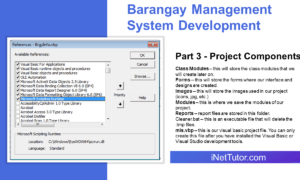
One thought on “Enrollment System Complete Capstone Documentation”
Comments disabled.